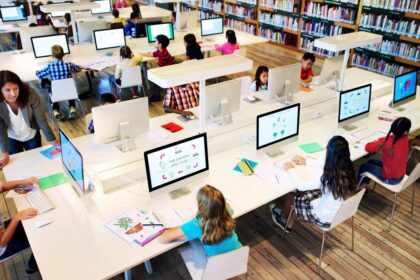
What is Social and Emotional Learning
Most people don’t know about SEL or Social and Emotional Learning. SEL is a method used to teach students how to manage their emotions, and better interact in social environments.
Benefits
Social and Emotional Learning is helpful when creating a classroom community. It is important for students of all ages to learn and continue practicing these strategies. SEL helps instill lifelong skills for children, and is proven to increase academic success. The methodology has become more present within a school setting in the last decade and even more so, following the pandemic. Like the rest of the World, many young children are now experiencing anxiety in larger settings, including school. I can only speak from my personal experience in elementary education, but I’ve noticed a huge impact on student’s behavioral needs. One of the greatest things about teaching SEL is building relationships with your students. I’m also a firm believer that by using these tools, you are avoiding many future behavioral and/or disciplinary concerns.
Examples
So what does this look like? Many schools have resources that align with their behavior plans. This of course makes life easier for teachers, not having to plan as much but I also believe if there’s consistency amongst grade levels, it can be more effective. If you aren’t in a PLC school, you can use outlets like Pinterest or Teachers Pay Teachers for SEL tools.
How you choose to teach Social and Emotional Learning in your classroom is totally up to you. Each class comes with different needs so use your discretion. Some of the easier ideas are read alouds, morning greetings, or emotion check ins. Each day looks different in my room but I am personally a big fan of read alouds and guided meditation. Keep it simple with breath work and search mindfulness for kids on Youtube. I promise it’s a game changer for you and the students. There are a handful of books that come with pre planned lessons, or you can even choose to read a book and discuss. Some of my personal favorites are The Invisible Boy, Chrysanthemum, and Thank you, Mr. Falker. If you don’t have these books, I highly recommend adding them to your Amazon Wishlist! There are books and tools for everything depending on where your class might be struggling.
How to Integrate in the Classroom
There are a lot of different ways to teach Social and Emotional Learning in the classroom. Most teachers use the “Morning Meeting” time to practice SEL. Of course, this isn’t the only time to implement practices, in fact you can teach SEL throughout the day. As mentioned before, there are multiple ways of incorporating these lessons into your ELA curriculum. If you are worried about student interest or engagement you can always turn this into a game or a quick “brain break.” I touched briefly on emotional check ins. This would be something you could do during dismissal at the end of the day. I love those moments before saying goodbye, where we can talk about our favorite or least favorite parts of the day. Depending on how you do this, it can double as an informal assessment. In the last post, I mentioned working smarter, not harder. I’m here to repeat that again! You don’t have to make extra time for this; you can incorporate these lessons into your academic instruction.
The most important thing with SEL is consistency. I truly believe that if you can take the time to teach these skills and strategies, you will avoid so many bumps down the road. I know sometimes as teachers, it’s easy to look at this and immediately see “one more thing” on your never ending to do list. I promise you, you won’t be disappointed.
-Lauren



